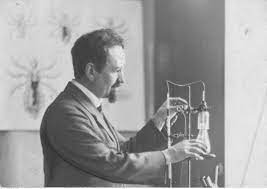Rudolf Weigl was a prominent figure in the field of biology in the early 20th century, known for his contributions to the study of infectious diseases and his development of a vaccine for typhus fever. Born in 1883 in Austria-Hungary, Weigl studied biology and medicine at the University of Lemberg (now Lviv, Ukraine), where he received his doctorate in 1907. He then worked as a researcher and lecturer at the university, focusing his studies on parasitology and bacteriology.
Weigl’s work on typhus fever began in 1913, when he was appointed as the head of the Typhus Research Institute in Lemberg. At the time, typhus fever was a major public health concern in Europe, with outbreaks occurring frequently in crowded and unsanitary conditions. Weigl and his team set out to develop a vaccine for the disease, using the method of creating a vaccine by using living, attenuated (weakened) strains of the typhus bacteria.
Weigl’s approach was groundbreaking at the time, as most vaccines were made using dead or inactive bacteria. He was able to create a vaccine that was both safe and effective, and his work saved countless lives during the typhus epidemics of World War I and World War II.
In addition to his work on typhus fever, Weigl also made significant contributions to the study of insect-borne diseases, particularly those carried by ticks. He also developed new methods for studying viruses, including a technique for growing viruses in chicken embryos that is still used today.
Weigl’s legacy in the field of biology is significant. His work on vaccines and infectious diseases paved the way for modern medicine and helped to establish the field of immunology. He was also a pioneer in the use of living organisms for vaccine development, a technique that is still used today for a number of different diseases.
Despite his many contributions to the field, Weigl’s legacy was largely forgotten after his death in 1957. However, in recent years there has been renewed interest in his work, and he is now recognized as one of the most important figures in the history of biology.




